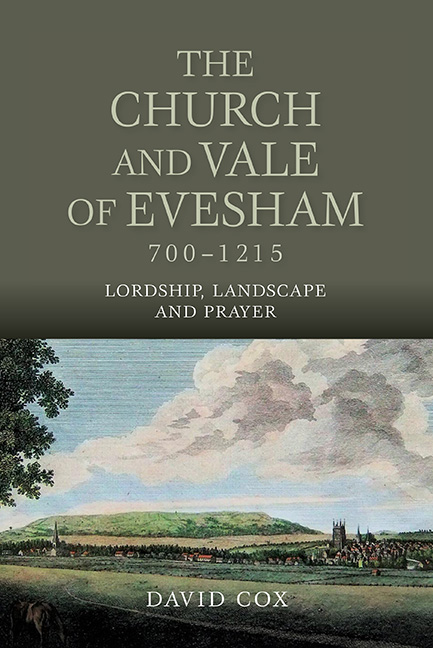Book contents
- Frontmatter
- Dedication
- Contents
- List of Illustrations
- Preface
- Timeline
- List of Abbreviations
- Part I From Minster to Abbey (701–1078)
- Part II Abbot Walter (1078–1104)
- Part III Twelfth-Century Themes (1104–1215)
- Afterword
- Appendix: The Abbots of Evesham to 1215
- Select Bibliography
- Index
- Miscellaneous Endmatter
- Frontmatter
- Dedication
- Contents
- List of Illustrations
- Preface
- Timeline
- List of Abbreviations
- Part I From Minster to Abbey (701–1078)
- Part II Abbot Walter (1078–1104)
- Part III Twelfth-Century Themes (1104–1215)
- Afterword
- Appendix: The Abbots of Evesham to 1215
- Select Bibliography
- Index
- Miscellaneous Endmatter
Summary
DURING the twelfth century the abbey's landed estate, valuable as it was, could not support every possible expense; such was the abbey's standing that its obligations far exceeded the welfare of a few dozen monks and the remuneration of their lay servants. It was a religious house comparable in rank to any in the land and it therefore had a dignity to keep up, and new buildings that would be suitable to its status were costly to provide and needed constant expense to furnish, staff, and keep in repair. The profitability of the demesne estates (where the demesne lands were not in the hands of freehold or feudal tenants) depended partly on physical structures that needed to be enhanced, equipped, and maintained; thus bridges, local churches, manor houses, barns, mills, fishponds, and dovecotes demanded continual expenditure. Moreover, the abbey was expected to make a contribution to the poor that was proportionate to its means. The abbot was a great prelate and lord and had to have the appropriate household luxuries and servants; he had to travel in suitable style to London and other cities; he had to bestow fitting hospitality on guests of a like status to his own; and to manage the many calls on his attention he had to pay for a retinue of secular clerks. An additional drain on the house was the king's entitlement to the abbey's temporal revenues during every vacancy of the abbacy. And from the middle of the twelfth century all the abbey's expenditure had to be carried on against a background of gradual price inflation, which was to become acute in the 1190s. The financial affairs of Evesham abbey could not safely be left to take care of themselves.
Income gained
On the face of things the abbey was gaining in economic strength. The number of people living on Evesham's rural manors in the Vale grew during the twelfth century, as did the number coming to live in the town. That may be the reason, or one of the reasons, why the nave of Bretforton church, originally aisleless, was enlarged twice c.1200, first by a south aisle and later by one on the north. Population growth throughout the Vale may also be inferred from three written sources.
- Type
- Chapter
- Information
- The Church and Vale of Evesham, 700-1215Lordship, Landscape and Prayer, pp. 149 - 157Publisher: Boydell & BrewerPrint publication year: 2015

